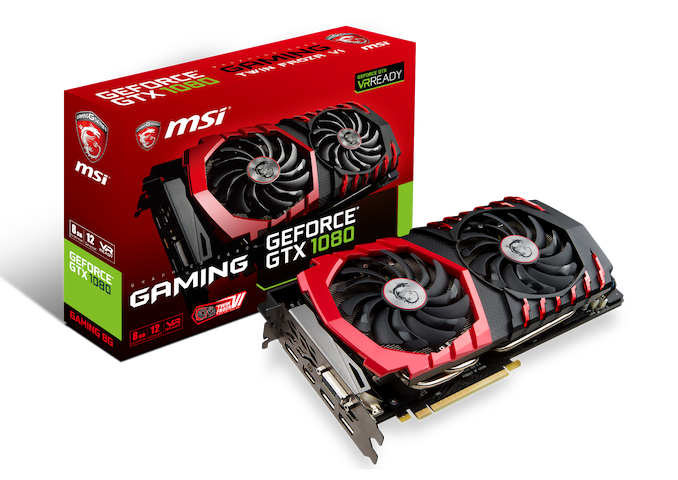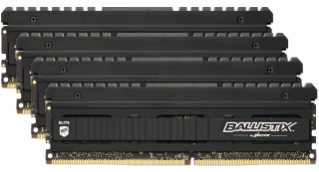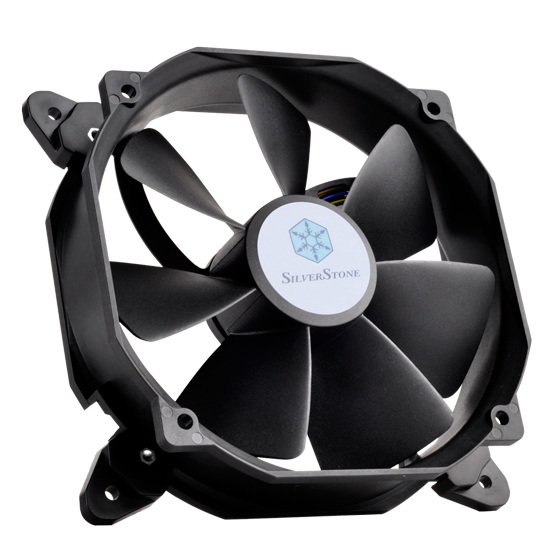AMD + ITX + TB3? It's the ASRock X570 Phantom Gaming-ITX/TB3 Motherboard Review
by Gavin Bonshor on October 9, 2019 12:00 PM ESTBoard Features
The X570 Phantom Gaming-ITX/TB3 is the only current small form factor motherboard in ASRock's X570 product stack and commands a price tag of $240. It has a couple of interesting inclusions including an HDMI 2.0 which allows users of AMD's Ryzen APUs the ability to output the integrated graphics. A single DisplayPort 1.2 input allows users to re-route the video signal from a graphics card and output it through the Thunderbolt 3 USB 3.1 G2 Type-C port; one of the main benefits to Thunderbolt 3 is it has a blisteringly fast 40 Gbps throughput which is capable of driving multiple 4K displays at once. Also on the rear panel are two USB 3.1 G2 Type-A and two USB 3.1 G1 Type-A ports. A common limitation of using a small form factor such as mini-ITX is that there is little room for PCIe and X570 Phantom Gaming-ITX/TB3 has just one full-length PCIe 4.0 x16 slot.
| ASRock X570 Phantom Gaming-ITX/TB3 ITX Motherboard | |||
| Warranty Period | 3 Years | ||
| Product Page | Link | ||
| Price | $240 | ||
| Size | mITX | ||
| CPU Interface | AM4 | ||
| Chipset | AMD X570 | ||
| Memory Slots (DDR4) | Two DDR4 Supporting 64 GB Dual Channel Up to DDR4-4533 |
||
| Video Outputs | N/A | ||
| Network Connectivity | Intel I211-AT GbE Intel AX200 Wi-Fi 6 802.11ax |
||
| Onboard Audio | Realtek ALC1220 | ||
| PCIe Slots for Graphics (from CPU) | 1 x PCIe 4.0 x16 | ||
| PCIe Slots for Other (from PCH) | N/A | ||
| Onboard SATA | Four, RAID 0/1/10 | ||
| Onboard M.2 | 1 x PCIe 4.0 x4/SATA (CPU) | ||
| USB 3.1 (10 Gbps) | 2 x Type-A Rear Panel 1 x Type-C Rear Panel (Thunderbolt 3) |
||
| USB 3.0 (5 Gbps) | 2 x Type-A Rear Panel 1 x Type-A Header (2 x ports) |
||
| USB 2.0 | 1 x Type-A Header (2 x ports) | ||
| Power Connectors | 1 x 24-pin ATX 1 x 8pin CPU |
||
| Fan Headers | 1 x CPU (4-pin) 1 x Water Pump (4-pin) 1 x System (4-pin) |
||
| IO Panel | 2 x USB 3.1 G2 Type-A 1 x USB 3.1 G2 Type-C Thunderbolt 3 2 x USB 3.1 G1 Type-A 1 x Network RJ45 (Intel) 5 x 3.5mm Audio Jacks (Realtek) 1 x S/PDIF Output (Realtek)) 2 x Intel AX200 Antenna Ports 1 x HDMI 2.0 Output 1 x DisplayPort 1.4 Input 1 x PS/2 Combo Port 1 x Clear CMOS Button |
||
For storage, the ASRock X570 Phantom Gaming-ITX/TB3 has just one PCIe 4.0 x4 M.2 slot which is mounted onto the rear of the board. The other physical slot located on the front of the PCB is a M.2 Key-E slot which is already populated with an Intel AX200 Wi-Fi 6 802.11ax wireless interface which offers uses BT 5.0 connectivity. This board also features an Intel I211-AT Gigabit NIC which powers the single Ethernet port on the rear panel. Also featured are four SATA ports which support RAID 0, 1, and 10 arrays. Another limitation of mini-ITX is present with just two memory slots which support up to DDR4-4533 and offer a maximum capacity of up to 64 GB. A Realtek ALC1220 HD audio codec powers the five 3.5 mm audio jacks and S/PDIF optical output on the rear panel, as well as the front panel audio header.
Test Bed
As per our testing policy, we take a high-end CPU suitable for the motherboard that was released during the socket’s initial launch and equip the system with a suitable amount of memory running at the processor maximum supported frequency. This is also typically run at JEDEC subtimings where possible. It is noted that some users are not keen on this policy, stating that sometimes the maximum supported frequency is quite low, or faster memory is available at a similar price, or that the JEDEC speeds can be prohibitive for performance. While these comments make sense, ultimately very few users apply memory profiles (either XMP or other) as they require interaction with the BIOS, and most users will fall back on JEDEC supported speeds - this includes home users as well as industry who might want to shave off a cent or two from the cost or stay within the margins set by the manufacturer. Where possible, we will extend out testing to include faster memory modules either at the same time as the review or a later date.
| Test Setup | |||
| Processor | AMD Ryzen 3700X, 65W, $329 8 Cores, 16 Threads, 3.6 GHz (4.4 GHz Turbo) |
||
| Motherboard | ASRock X570 Phantom Gaming-ITX/TB3 (BIOS 1.70) | ||
| Cooling | ID Cooling Auraflow 240mm AIO | ||
| Power Supply | Thermaltake Toughpower Grand 1200W Gold PSU | ||
| Memory | 2x8GB G.Skill TridentZ DDR4-3200 16-16-16-36 2T | ||
| Video Card | ASUS GTX 980 STRIX (1178/1279 Boost) | ||
| Hard Drive | Crucial MX300 1TB | ||
| Case | Open Benchtable BC1.1 (Silver) | ||
| Operating System | Windows 10 1903 inc. Spectre/Meltdown Patches | ||
Readers of our motherboard review section will have noted the trend in modern motherboards to implement a form of MultiCore Enhancement / Acceleration / Turbo (read our report here) on their motherboards. This does several things, including better benchmark results at stock settings (not entirely needed if overclocking is an end-user goal) at the expense of heat and temperature. It also gives, in essence, an automatic overclock which may be against what the user wants. Our testing methodology is ‘out-of-the-box’, with the latest public BIOS installed and XMP enabled, and thus subject to the whims of this feature. It is ultimately up to the motherboard manufacturer to take this risk – and manufacturers taking risks in the setup is something they do on every product (think C-state settings, USB priority, DPC Latency / monitoring priority, overriding memory sub-timings at JEDEC). Processor speed change is part of that risk, and ultimately if no overclocking is planned, some motherboards will affect how fast that shiny new processor goes and can be an important factor in the system build.
New Test Suite: Spectre and Meltdown Hardened
Since the start of our Z390 reviews, we are using an updated OS, updated drivers, and updated software. This is in line with our CPU testing updates, which includes Spectre and Meltdown patches. We are also running the testbed with the new Windows 10 1903 update for AMD's Ryzen 3000 series CPUs, and X570 motherboard reviews. The Windows 1903 update improves multi-core and multi-thread performance on AMD's Ryzen processors with topology awareness meaning previous issues in regards to latency have been known to affect performance. As users are recommended to keep their Windows 10 operating system updates, our performance data is reflected with the 1903 update.


















64 Comments
View All Comments
HardwareDufus - Wednesday, October 9, 2019 - link
This board is sooooo close to what I want. However, a 2nd M.2 slot, for a 2nd NVMe drive is necessary. I know it's allot to ask for in an m-ITX board, but it can be done.shabby - Wednesday, October 9, 2019 - link
Next version they add a second nvme slot "oh I wish it had 10gbit lan, almost prefect..."wolrah - Wednesday, October 9, 2019 - link
> Next version they add a second nvme slot "oh I wish it had 10gbit lan, almost prefect..."To be fair, at least something >1gbit *should* have been standard on high-end boards long ago, but for whatever reason no one's integrated it in to a chipset.
Instead we get a compact desktop board that wastes precious space with WiFi. WiFi is for things that move and things that get placed in odd locations where wiring is impractical. Desktop computers are neither of those things. Even if you're one of those screwballs who refuses to plug in a cable or insists on placing your computer in some weird place it's not like WiFi is fast enough that USB would be a bottleneck, so there's no good reason for it to be taking up space on a motherboard.
Hell, actually a M.2 slot would be a win-win there, those who want WiFi can install it instead of a SSD.
DiHydro - Wednesday, October 9, 2019 - link
No, I think he is right. Being able to stick another M.2 drive in there is super helpful, especially as if you leave it open for a cheaper/slower SSD as more of a mass storage option. Personally, I want it for two 2 TB intel drives right off the bat, then I will add another SATA drive if I need it at that point.29a - Thursday, October 10, 2019 - link
just buy a 4 tb samsung29a - Thursday, October 10, 2019 - link
or use sata ssd's for the slower cheap storagewr3zzz - Monday, October 14, 2019 - link
Your obviously have never worked with ITX or even mATX cases. An extra M.2 slot is a godsend vs. the space and cabling headaches of sata drives in SFF.DCide - Wednesday, October 9, 2019 - link
Collectively, these are some of the worst comments I’ve ever seen on AT. This is probably the best mITX motherboard board ever designed - even surpassing ASRock’s excellent X299 boards.16 high-performance cores, nearly 4000 points in Cinebench R15, 64GB of high-speed DD4, 18TB of SSD storage (2TB at 3GB/s and 16TB at 1.5GB/s), 6 USB3 ports (two of them Gen 2), and the first full-speed Thunderbolt 3 ever on an mITX motherboard! In fact, being on AMD, I won’t be shocked if it turns out to run at 40Gbps, rather than the expected 32Gbps (on Intel ATX) or 16Gbps (on Intel mITX).
WiFi is useful on a portable form factor (at minimal expense), while 10GbE generates significant heat and adds nearly $100 to the cost. I think every complaint here can be addressed with proper system design, and Thunderbolt 3 makes all the difference, allowing one to add e.g. 10GbE and USB 3 as needed. In fact, TB3 makes this the first mITX board that can transfer files at 2/3 GB/s (in/out) and operate an eGPU with all 4 PCIe 3.0 lanes!
Ironically, the only significant drawback wasn’t mentioned yet - the lack of an iGPU on Zen 2 (useful e.g. for video encoding) which could free up the PCIe slot/lanes for other uses.
chx1975 - Wednesday, October 9, 2019 - link
The Thunderbolt chip, out of necessity, is the same Intel Titan Ridge you'd find on Intel ATX boards or some laptops. While this motherboard is the first to integrate it, there were reports on various forums of the Gigabyte Titan Ridge card (not the Alpine Ridge) working in AMD motherboards without connecting the special header it has. There is no Titan Ridge LP so the bus speed will be 40gbps and the data speed will be 22gbps. That's the same across all TB3 controllers, except the Alpine Ridge LP where the data speed will be 16gps and the bus speed, I think even after this many years, is simply unknown. 20gbps would make sense but it could be just the 18gbps necessary to run a DisplayPort. But then again, there is no common sense where Intel and Thunderbolt is concerned, noone knows why they gimped the data speed on full speed controllers to 22gbps.DCide - Wednesday, October 9, 2019 - link
No, I agree there’s not much common sense there - even down to questions such as “why is TB3 networking limited to 10Gbps” (and reportedly not even reliable enough for production - I’ve only used it in testing scenarios).I had not heard of the 22gbps data limit, but even if it applies here this motherboard should still be the most flexible and highest performance mITX model available, and (fortunately) could still approach 3GB/s transfer rates.